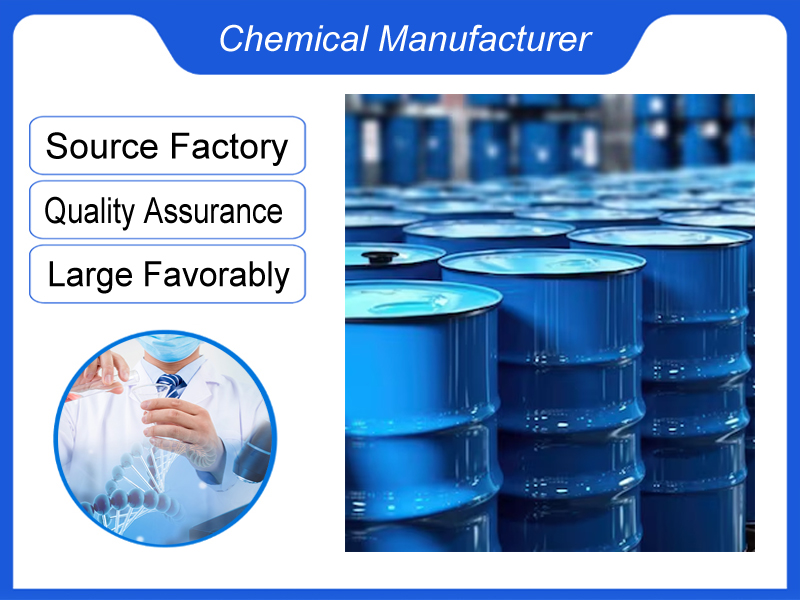
Myristoyl chloride
We are a manufacturer based in China. We specialize in providing high-quality Myristoyl chloride for industrial clients across various sectors. Whether you need chemicals consultation or technical support, our team is here to help.
Category:Chemical Additives Own Brand:MT /MOQ:100KG /From China/ B2B only.
Introduction
Myristoyl Chloride
Chemical Formula: C₁₄H₂₇ClO
Classification: Acyl chloride derived from myristic acid, with a 14-carbon myristoyl group (CH₃(CH₂)₁₂CO-) and a carbonyl chloride (-COCl).
Physical Properties
- Appearance: Clear, colorless to pale yellow liquid.
- Odor: Pungent.
- Reactivity:
- Moisture-sensitive: Reacts violently with water, releasing HCl gas.
- Highly reactive in acylation reactions (e.g., esterification, amidation).
Applications
- Organic Synthesis:
- Introduces myristoyl groups to synthesize esters, amides, and derivatives for pharmaceuticals and agrochemicals.
- Surfactant Production:
- Key intermediate in cosmetics, detergents, and personal care products.
Safety Considerations ⚠️
- Health Hazards:
- Corrosive: Causes severe burns to skin, eyes, and respiratory tract.
- Releases HCl gas upon hydrolysis.
- Handling:
- Use PPE (gloves, goggles, respirator) and work in a fume hood.
- Storage:
- Store in a cool, dry, airtight container away from moisture and incompatible substances (e.g., bases, oxidizers).
Summary:
Myristoyl chloride’s high reactivity and long-chain acyl group make it critical in synthesizing surfactants, pharmaceuticals, and specialty chemicals. Strict safety protocols are essential due to its corrosive nature and moisture sensitivity.
Myristoyl Chloride: Technical Overview
Myristoyl chloride (C₁₄H₂₇ClO) is a fatty acid chloride derived from myristic acid, widely used in organic synthesis, pharmaceuticals, and specialty chemicals. Below is a structured summary of its properties, applications, and safety data.
Basic Chemical Properties
| Category | Specifications |
|---|---|
| Chemical Name | Tetradecanoyl chloride |
| CAS No. | 112-64-1 |
| Molecular Formula | C₁₄H₂₇ClO |
| Molecular Weight | 246.82 g/mol |
| Appearance | Colorless to pale yellow liquid |
| Odor | Pungent, acrid |
| Density (20°C) | 0.91–0.93 g/cm³ |
| Boiling Point | 160–165°C (15 mmHg) |
| Flash Point | >110°C (closed cup) |
| Solubility | Reacts with water; soluble in organic solvents (e.g., ether, THF, chloroform) |
Key Chemical Characteristics
| Property | Description |
|---|---|
| Reactivity | Highly reactive with nucleophiles (e.g., alcohols, amines). |
| Hydrolysis | Rapidly hydrolyzes in water to myristic acid and HCl. |
| Acylation Efficiency | Excellent for introducing myristoyl groups in organic synthesis. |
| Thermal Stability | Stable at room temperature; decomposes at high temperatures (>200°C). |
Primary Applications
| Industry | Use Case |
|---|---|
| Pharmaceuticals | – Prodrug synthesis – Lipophilic modification of APIs |
| Cosmetics | – Surfactant precursor – Emollient ester production |
| Organic Synthesis | – Acylation agent for alcohols/amines – Fatty acid derivatives |
| Agrochemicals | – Intermediate for pesticide formulations |
| Polymers & Coatings | – Monomer for specialty polyesters |
Handling & Safety Data
| Parameter | Guidelines |
|---|---|
| Storage Conditions | – Dry, cool (<25°C), inert atmosphere – Moisture-sensitive |
| Corrosivity | Causes severe skin/eye burns; corrodes metals. |
| Toxicity | – Harmful if inhaled/swallowed – Causes respiratory irritation |
| First Aid Measures | – Skin contact: Rinse with water – Inhalation: Move to fresh air |
| Fire Hazards | Combustible at high temperatures; emits toxic HCl fumes when heated. |
| Environmental Impact | Toxic to aquatic life; avoid release into water systems. |
Regulatory Compliance
| Regulation | Status |
|---|---|
| REACH | Registered |
| OSHA Hazards | Corrosive, irritant |
| Transport Class | 8 (Corrosive) |
Note: Due to its reactivity, myristoyl chloride should be handled under controlled conditions (gloves, goggles, fume hood).
If you're ready to take the next step, Leave your message below and we’ll reply soon. 20+ years of chemical manufacturing & export experience, a partner you can trust.





